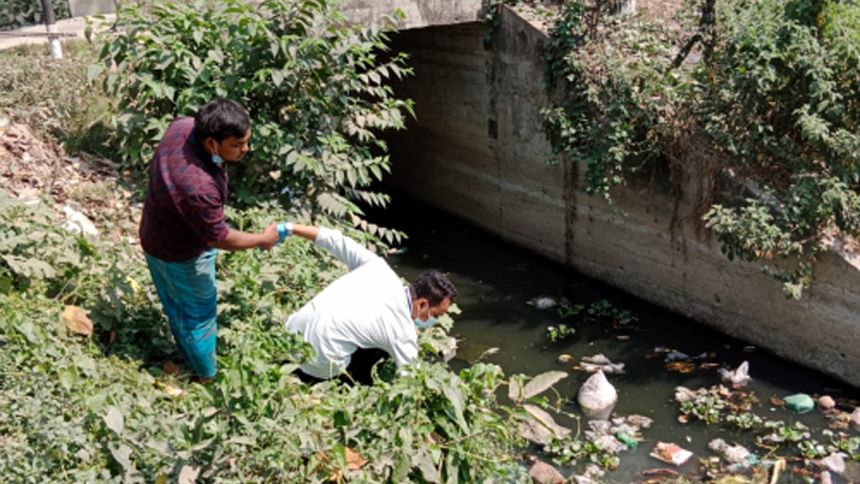Environmental monitoring offers low-cost tool for typhoid fever surveillance

A recent study conducted by Senjuti Saha and her team at the Child Health Research Foundation in Bangladesh has revealed a promising new method for tracking the prevalence of Typhoid fever in communities, which has been published in the open access journal PLOS Neglected Tropical Diseases.
The team tested 303 water samples from two locations in Bangladesh: the urban capital city, Dhaka, and a rural district, Mirzapur. They found that bacteriophages specific for Salmonella Typhi were present in 31% of environmental samples in Dhaka, compared to just 3% of samples from Mirzapur. This corresponds to results from more than 8,400 blood cultures, in which 5% of cultures from Dhaka and 0.05% from Mirzapur tested positive.
Typhoid fever is a significant health issue, causing millions of infections and thousands of deaths worldwide each year, particularly in low- and middle-income countries. Traditionally, health experts have relied on blood samples to identify areas where Typhoid fever is most common.
However, this approach can be costly and time-consuming. In their study, Saha and her colleagues explored a more affordable and efficient alternative: monitoring environmental water samples for specific viruses called bacteriophages, which target the bacteria responsible for typhoid fever, Salmonella typhi.
By testing water samples from both urban and rural areas in Bangladesh, the researchers discovered that bacteriophages specific to Salmonella Typhi were present in a significant proportion of samples from the capital city, Dhaka, compared to those from a rural district, Mirzapur. This finding correlated with the results of traditional blood cultures, where a higher percentage of positive cases were detected in Dhaka compared to Mirzapur.
These results suggest that monitoring bacteriophages in wastewater could provide a rapid and cost-effective way to identify areas where typhoid fever is prevalent. Instead of relying solely on expensive and time-consuming blood tests, policymakers could use this method to pinpoint "hotspots" of typhoid fever in communities more efficiently.
The researchers propose that environmental surveillance of bacteriophages could be a simple, scalable tool to assist decision-makers in implementing effective strategies for typhoid control. By identifying areas with high levels of Salmonella Typhi bacteriophages in wastewater, authorities can target interventions such as vaccination campaigns more precisely, ultimately helping to reduce the burden of Typhoid fever on communities.
In summary, this study highlights the potential of using bacteriophages in environmental samples as a practical and cost-effective method for tracking the prevalence of typhoid fever. By harnessing this innovative approach, healthcare professionals and policymakers can make more informed decisions to combat this widespread infectious disease, particularly in resource-limited settings.

 For all latest news, follow The Daily Star's Google News channel.
For all latest news, follow The Daily Star's Google News channel. 



Comments